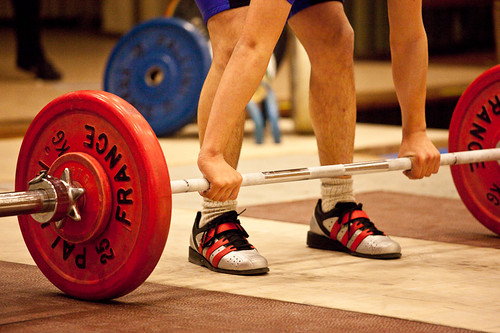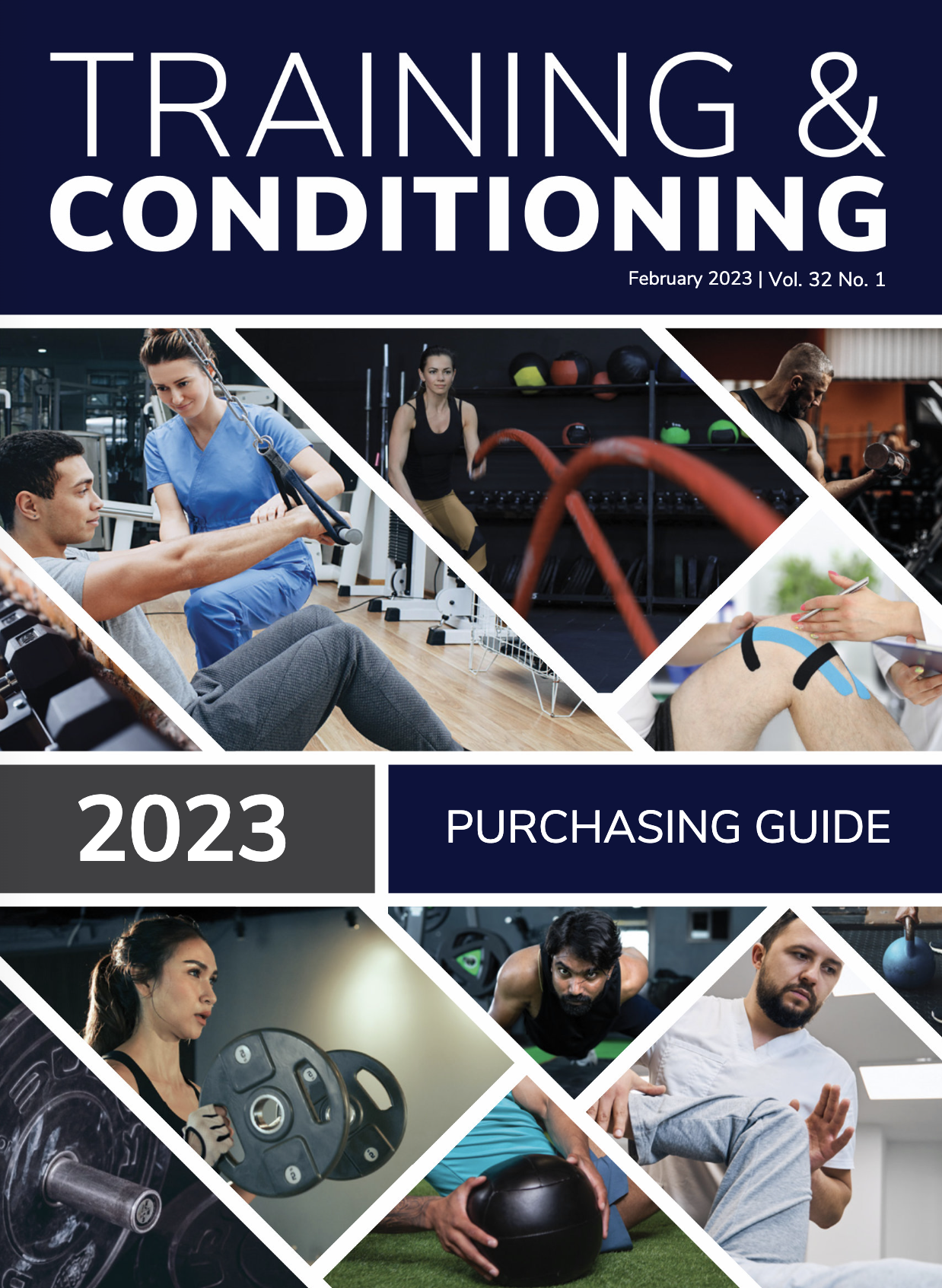Oct 29, 2020Rest, Assured: The Value of Quality Rest
Today with the emphasis on safely developing and increasing strength and conditioning in athletes at all levels, less thought is put into rest periods. How long should rest periods be between sets, training sessions, and seasons? For the most part, it is really not monitored in the majority of weight rooms – understanding that it is probably closely monitored in some. There is a need for more research on rest and how it affects the volume of training. Rest periods are not a demanding topic in the discipline of strength and conditioning.
InDesigning Resistance Training Programs, Fleck and Kreamer indicated that depending on the goals or phase of the program, rest periods are vital to the efficacy of any sport-training program. This article will define the most effective rest periods between sets, training sessions, seasons and explain the role of “active rest” in a year-round program.

*On a separate note:Although sleep is obviously considered rest and very important to the overall health and well-being of athletes, it is not the focus of this article. For most adults, seven to eight hours of sleep every night is thought to be the most adequate amount.
In working with high school athletes for the past several years, it is this author’s opinion that they average closer to 5.5 to 6.5 hours of sleep a night. Take this into consideration when working with younger athletes. Now let’s look at the various lengths of rest periods in training programs.
Interset Rest
The human body requires rest for physical and mental recovery. In specific training sessions, interest rest period times are designed to allow enough recovery between sets to complete a certain number of repetitions (reps) and sets with a certain amount of weight or percent of repetition maximum (RM). For clarity, understand that volume is defined as reps x sets x resistance, and intensity is %RM or load used.
Muscular Endurance Rest Interval
在一个重量轻的肌肉耐力项目s are used for many repetitions rest periods should be 30 seconds or less. This type of program is circuit training where athletes move from one exercise to another with short rest periods. Generally speaking, this type of program is not usually part of a periodized year-round program for most sports — although it may be appropriate for sports with less demand for strength and power like tennis, cross country, and golf. In the general population, it is used for basic fitness with an emphasis on cardiovascular development.
Hypertrophy Phase Rest Interval
In the Periodization model used by many strength coaches, rest periods are specific to the phases of training. In the hypertrophy phase (high volume and low intensity), which usually consists of reps in the 12-15 range and 3-4 sets, 30 to 90-second rest periods are recommended. Any program using high volume and low intensity can utilize 30 to 90-second rest periods putting more emphasis on cardiovascular conditioning and developing a base level of strength. This phase is usually started at the beginning of the off-season. The idea is to get in more sets and reps in a given amount of time to achieve the desired training effect. Longer rest periods would allow for more recovery thus decreasing the cardiovascular benefit.
Strength Phase Rest Interval
In staying with the Periodization model, a strength phase would come next consisting of reps in the 8-10 range with a greater %RM. With the increase in intensity, a longer rest period in the range of two to five minutes is needed for adequate recovery between sets. This phase may start in the latter half of an off-season. Again, any program using moderate intensity and volume will need two to five minutes for interset rest periods. The concept with these specific rest periods is to rest the suggested time for recovery but, no longer. Less fit athletes may need additional time for recovery in any phase which can be monitored and gradually reduced back to the suggested time as their level of fitness improves.
Power Phase Rest Interval
A power phase in the periodization model usually starts around pre-season consisting of an RM of 3-5 reps and 2-3 sets. In this phase, rest periods are three to five minutes. A power phase may be two to three weeks in duration. Know that strength coaches usually lay out the duration of each phase of training according to the sport, its demands, and the time of year.
Peaking Phase Rest Interval
In some programs (individual and Olympic sports), a Peaking phase may be used where the highest intensity and very low volume is used for a very short time — usually, one week just before a season or major competition starts. Because the intensity is high, 1-3 reps with near-maximum RM, interset rest periods can be up to 5 minutes. Remember, the important point to understand is to achieve the desired training effect of increased strength, interset rest periods need to be adequate for a given volume and intensity. Rest periods correlate with intensity — the higher the intensity — the longer the rest period.
Maintenance Phase

Many programs use a maintenance phase or in-season program. Depending on the sport, strength coaches design the program to the demands of the sport and the length of the season. Rest between competitions is probably most important during any sports season — so strength coaches may have a low volume, low-intensity type of program for their athletes during the season to avoid burnout and fatigue and maintain the strength gains achieved during the previous phases.
The physical demands of a sport season tend to physically break down bodies and this author believes maintaining strength is secondary to the energy requirements of the competition. Therefore, having a certified strength coach on the staff that communicates well with the coaching staff and athletes is so important for the overall conditioning needs of the entire team — especially during a season.
Rest Between Training Sessions
Most strength coaches would agree that the body needs at least 24 hours of rest between training sessions of the same muscle groups to allow for physiological repair of the trained muscles. More time can always be given if an athlete is sore or fatigued from previous sessions. This is where the value of a certified strength coach can pay off. He or she can determine if more rest is needed between sessions for physical recovery.
Active Rest
Another term used in a year-round program of periodization is active rest. Active rest is important to avoid burnout or overtraining. It consists of engaging in a recreational activity like hiking, running, biking, swimming, or any other recreational activity at a lower intensity for enjoyment. This allows the athlete to get out of the weight room for a short period of time — usually one week in-between seasons. In any one-year period, an athlete may have 3-4 weeks of active rest — which allows for physical and mental rest from a sport season and the resistance training and other conditioning that goes in conjunction with it. In the current culture of athletic development, active rest should be included in every year-round program for physical and mental recovery. It is absolutely crucial for athletes to take time off from their sports.
Research
The key points in the Senna, G., et. al. study is that when maximal strength is the desired training effect, the total volume is important and longer rest intervals may be necessary to complete the total number of prescribed reps and sets. Also, the reverse seems apparent that shorter rest intervals between sets and exercises showed fewer reps were completed in the latter sets — which, in effect, would negatively affect strength gains.
» ALSO SEE:Strength Coach Roundtable Discussion
Fatigue development in a set is determined by the replenishment of ATP-PC, which strength development is dependent on. In essence, longer rest periods allow for a greater volume of work to be done at a specific intensity.
Miranda, H., et. al. also looked at how various rest periods affected total workout volume. 3-minute rest periods allowed for a greater workout volume to be completed than one minute when looking at multiple sets for upper body exercises.
Studies like these illustrate the importance of prescribing appropriate rest periods between sets and exercises to achieve maximum strength gains for the higher intensity volumes. Rest long enough to recover in order to complete the prescribed training session.
Conclusion
Quality rest is necessary in athletic development — both mentally and physically. The goals of the program — strength, power, endurance, or maintenance dictate the length of interset rest periods. Shorter rest periods for higher volume lower intensities — progressing to longer rest periods for lower volume higher intensities. Certified strength coaches prescribe rest periods between training sessions — which is program dependent. In-season program rest is very dependent on the demands of sport and should be carefully adjusted by the strength coach.
积极的休息之间发生物理一个季节d mental recovery and is usually 1-2 weeks — depending on the time of year. Regardless of the program used for year-round training, rest periods are necessary for proper recovery between sets, sessions, and seasons. Strength gains are dependent on them – so communicate with your strength coach so the entire coaching staff understands the importance of accurate rest periods in all phases for developing athletes at all competitive levels. Quality Rest is the key.



